The Minor iv Chord
Let's begin in the key of E major, with a typically relaxed and pleasant movement...

Now I'm gonna change that A major chord to minor. Let's hear how this changes the overall mood of the sequence...

Now, there are many words that might spring to mind to describe this change. But most would agree that there's a certain difference in our emotional response to A major vs A minor.
A major changing to minor feels like something tragic has occurred on our otherwise pleasant journey away from home. That feeling of loss or longing disturbs the natural restfulness of the major key, giving it a hauntingly bitter sweet quality.
What we've essentially done here is use a minor 4 (iv) or subdominant chord. You'll hear the minor 4 chord used in many major key compositions old and new, and often accompanied with reflectively dark lyrics.
Here's how the minor 4 would occur in common major keys...

A famous modern example is Radiohead's No Surprises (Emaj to Am in the intro)...
Santo & Johnny's Sleep Walk makes use of a minor iv (C / Am / Fm / G)...
Paul Fletcher opts for a more sombre G major key (using Cm iv) in Fool In Love With You...
Foo Fighters use the Fm iv in their C major key Ain't It The Life over the lyric "wasting time"...
Another example in C major, with its natural 4 chord, F major, replaced with F minor...
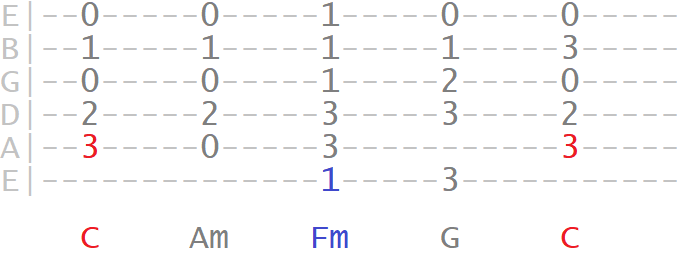
Minor iv Chord Colouring
As a basic triad, the minor 4 chord is emotionally charged enough! But there are certain colour tones we can use to enhance this unique quality.
For example, the minor 6th chord (e.g. Am6) which adds the interval of a 6th to the minor triad. Below are charts for the most common m6 shapes on the 6th, 5th and 4th root strings. Simply position the 1 on the root of the chord you want to play...
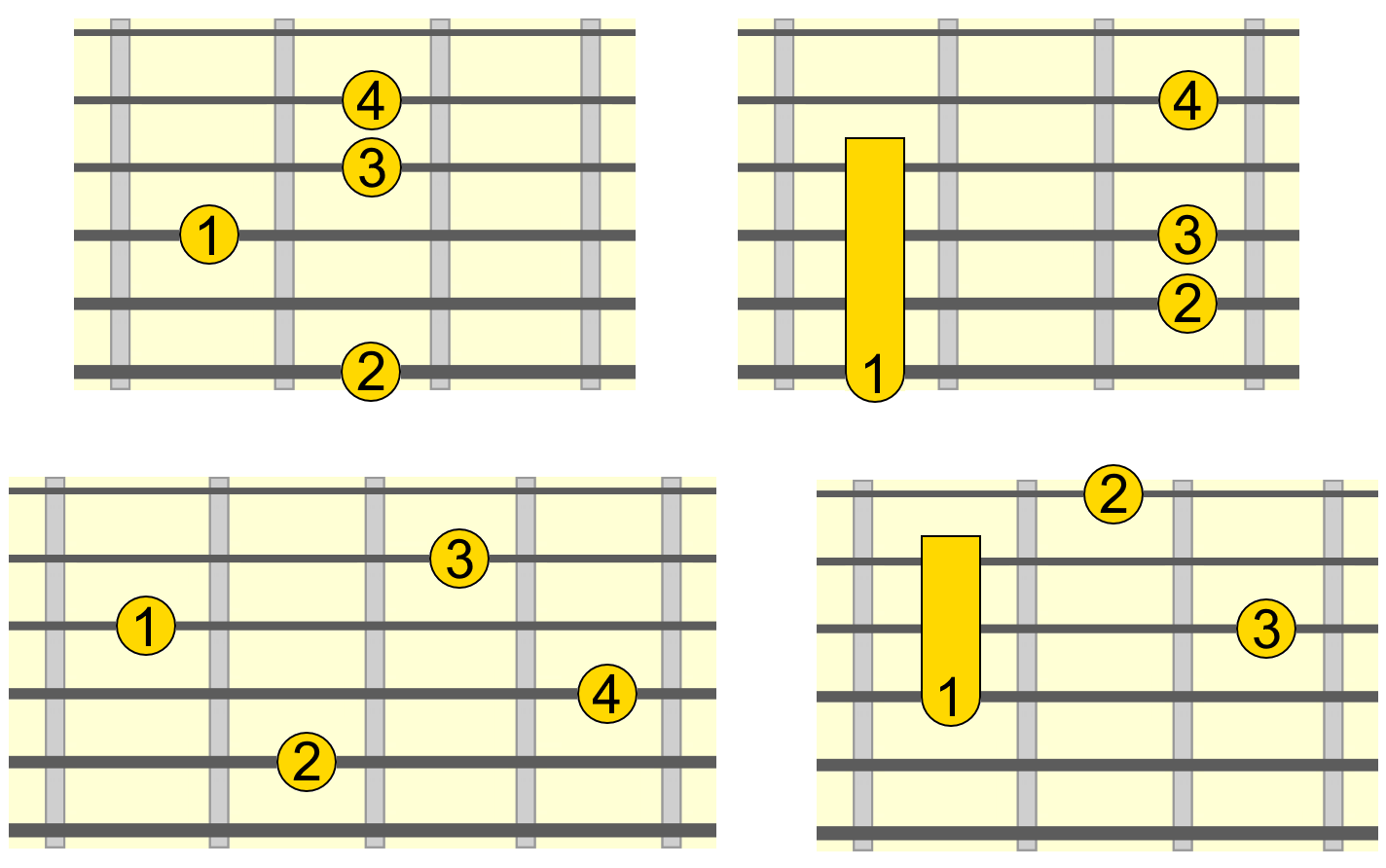
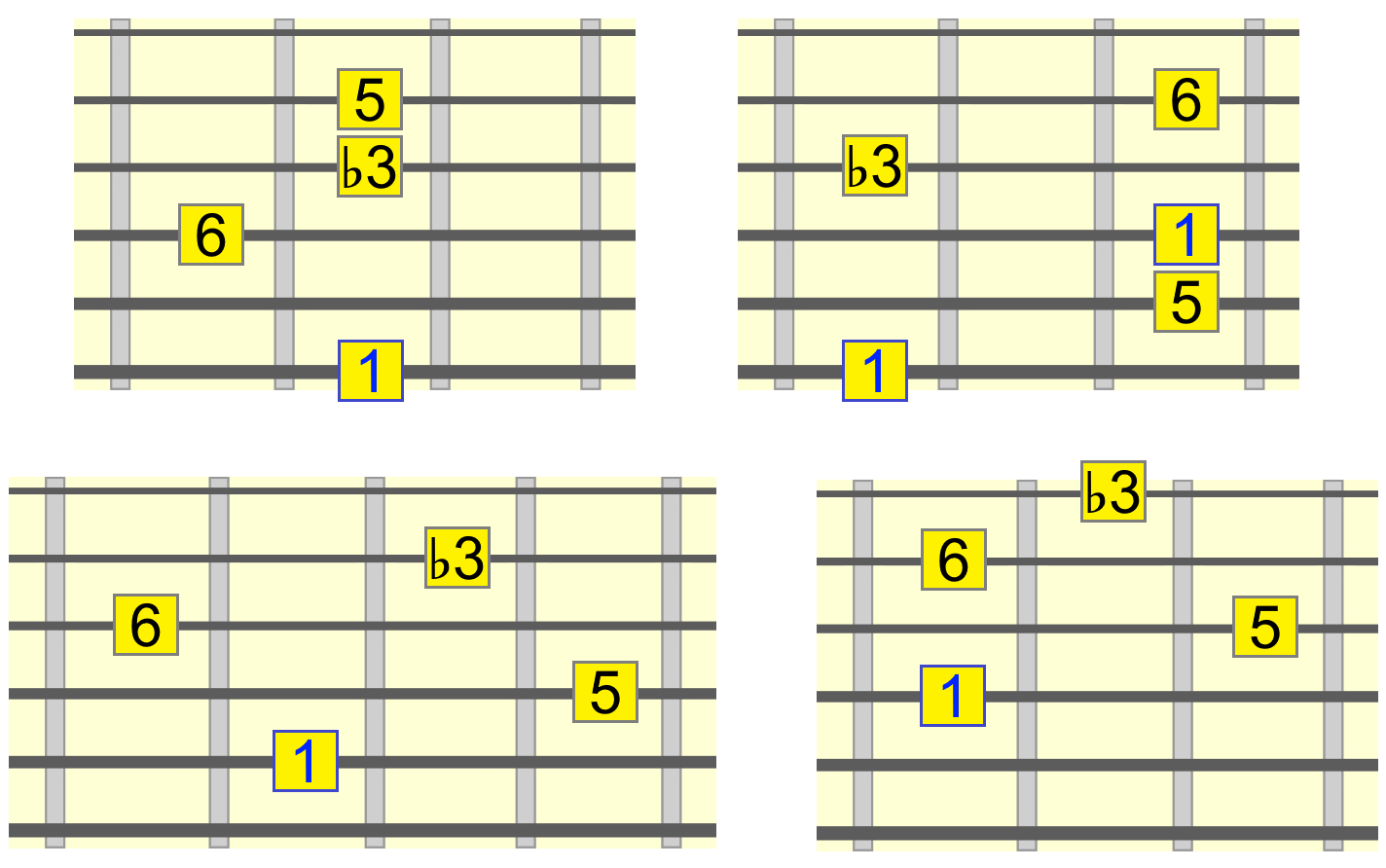
Here's an example of using some of these shapes on the iv position in the keys of E major and A major...

Interestingly, we can play a m7♭5 (or half diminished) shape two frets up from the key's tonic root as an inversion of this minor 6th iv chord.
For example, in C major we might play a Dm7♭5 chord as an inversion of Fm6...

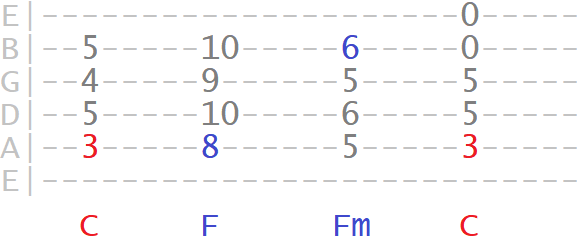
Here I'm using an F♯m7♭5 shape as an inversion of Am in the key of E major...
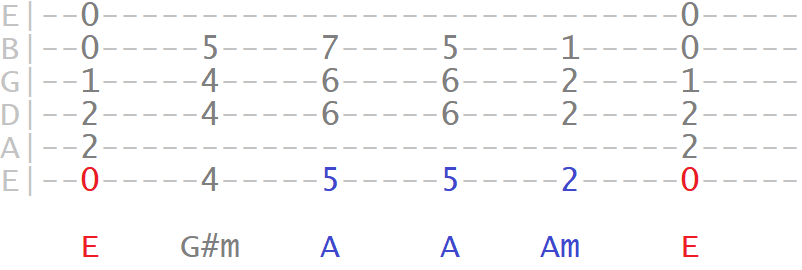
It's open to interpretation whether you see both these examples as a borrowed 2nd degree chord or an inversion of the minor 4th degree chord.
An added 9th (e.g. Amadd9) also complements the minor 4 chord, such as this example in E major...

In that example, I switched between both an added 9th and 6th minor iv variation.
Let's take a look at some more added 9th shapes...
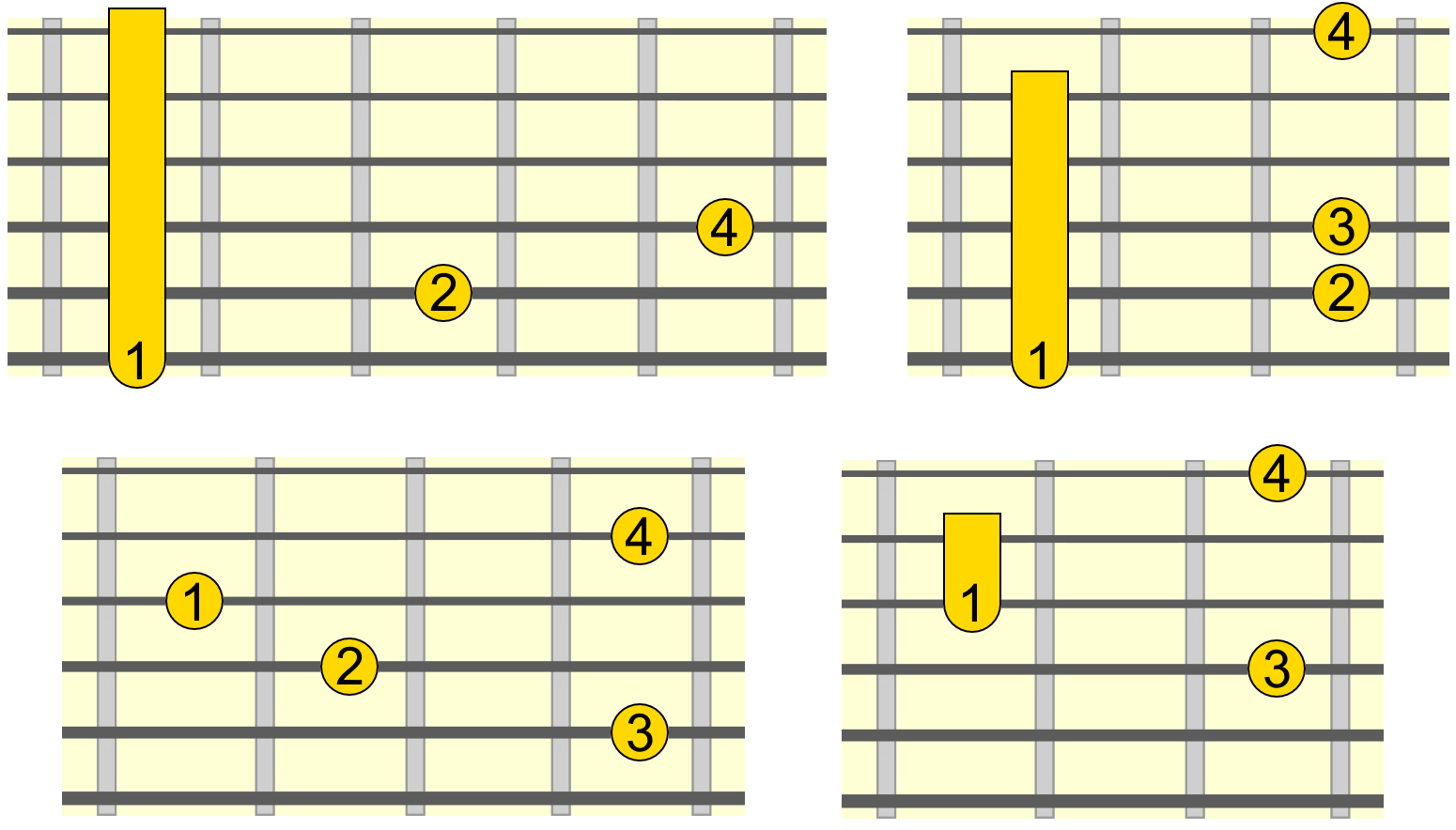
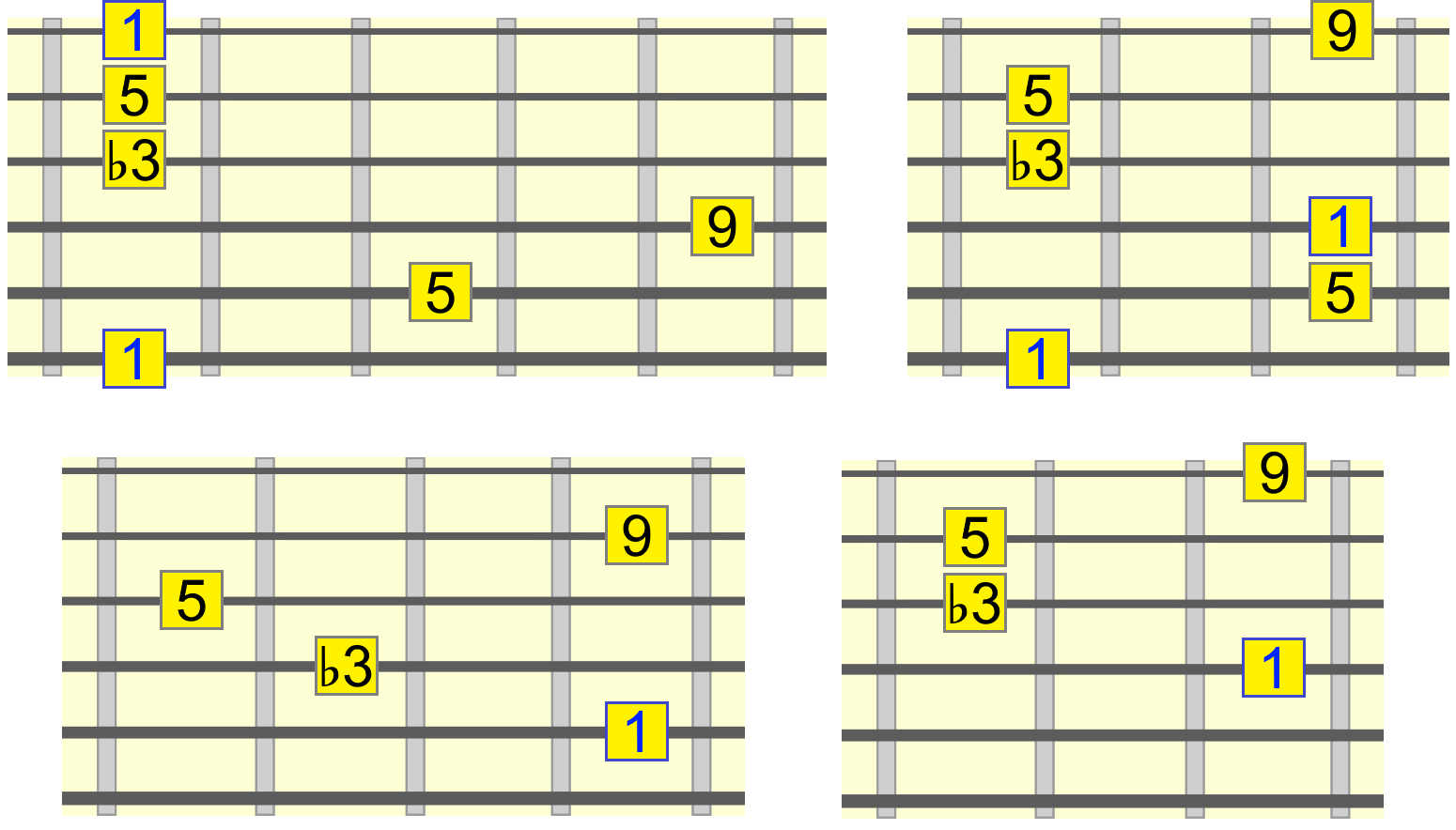
Or we can add the major 7th interval, giving us a minor major 7th chord (e.g. AmM7). Another way to add tension and darkness to the minor subdominant.
First, the shapes...
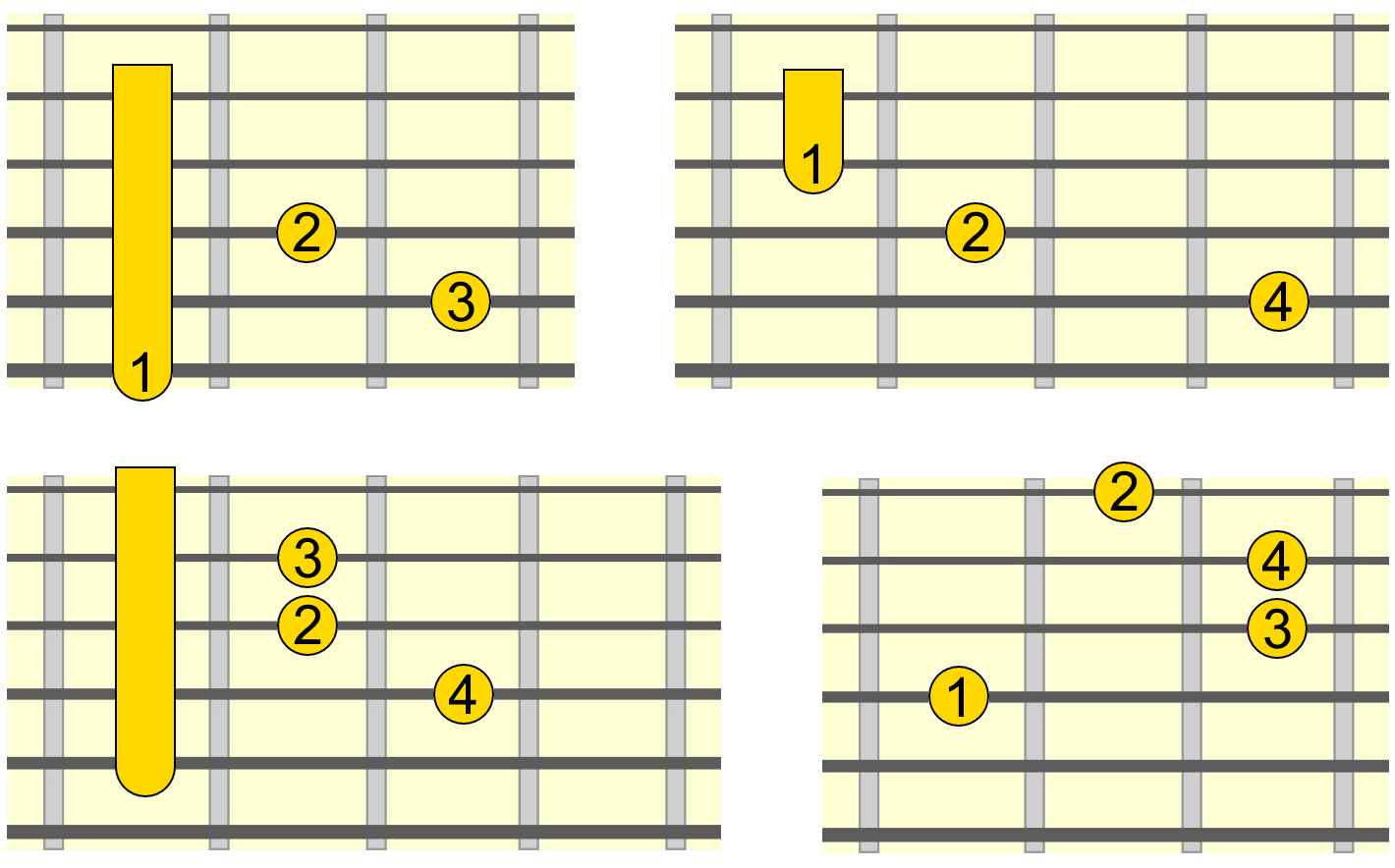
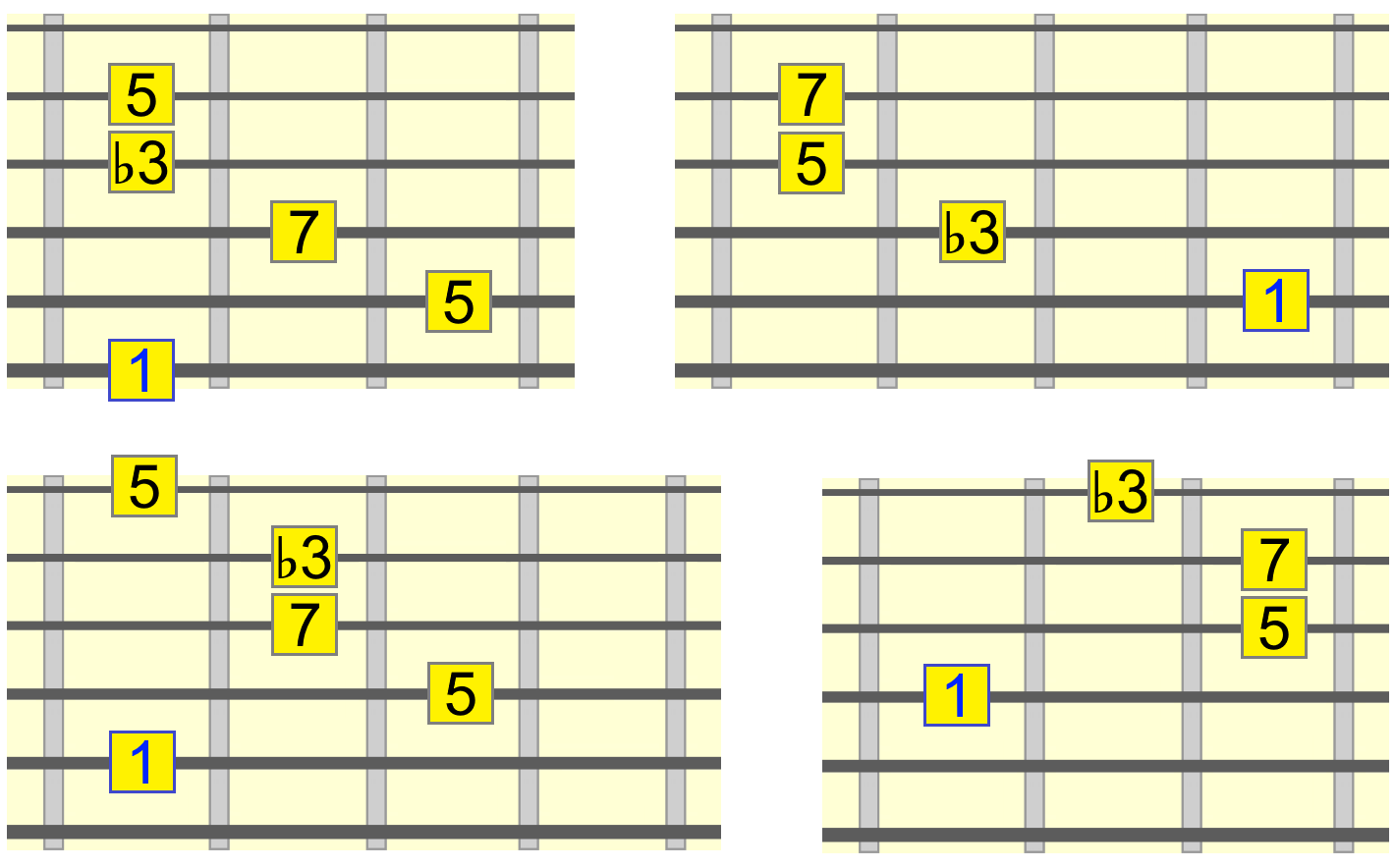
Here we're using an FmM7 iv chord in a C major key...

Now within the structure of the minor major 7th chord is an augmented triad, formed from the ♭3, 5th and 7th.
Here I'm taking the top three strings of a DmM7 shape to create an augmented triad...
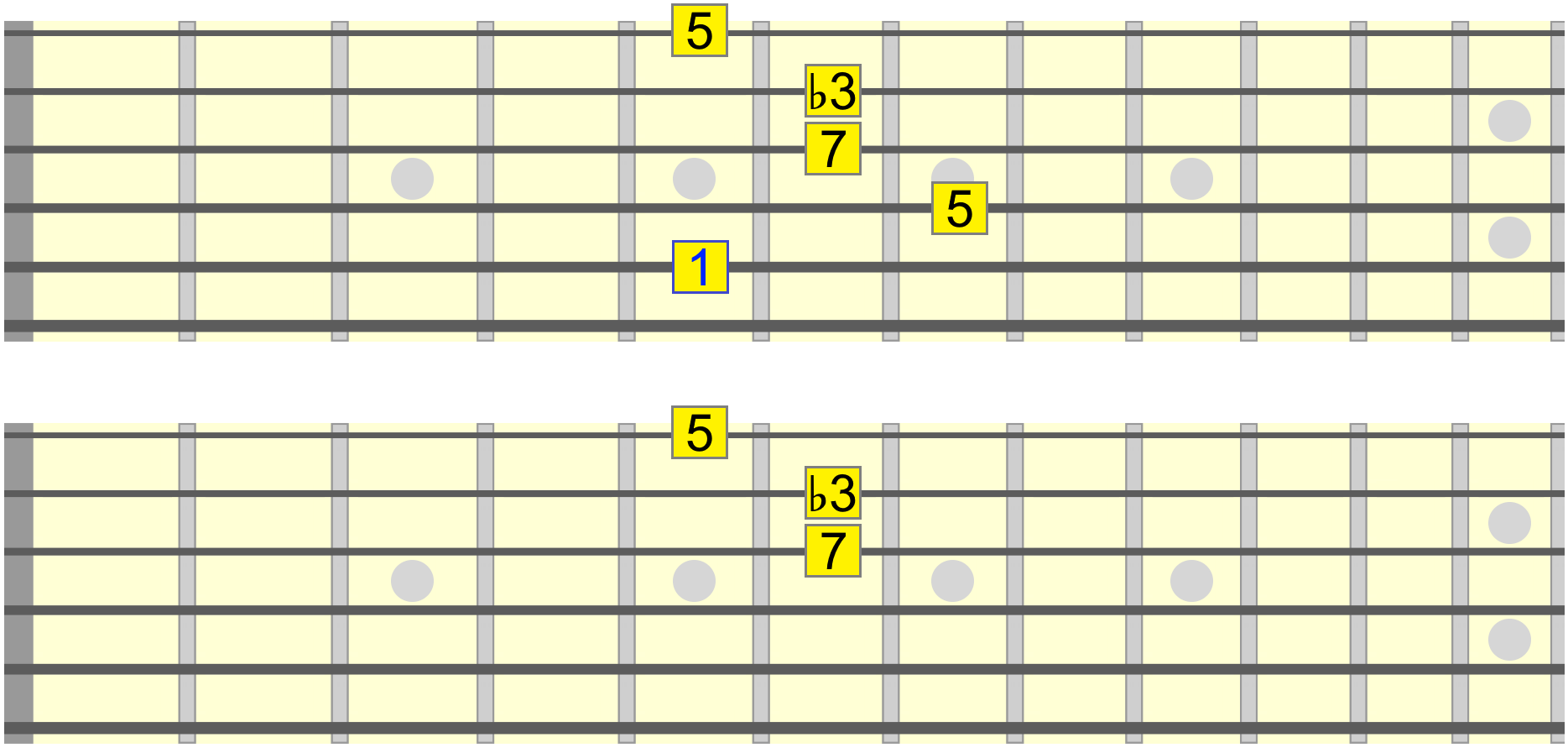
This triad has what is known in music as symmetry. I go into the symmetry of augmented triads in more depth in its individual lesson.
But in short, this means we can move the augmented triad up the neck in intervals of a major 3rd, as a way of expressing the minor major 7th colour. For example, D minor major 7...


Minor iv Inversions
Some more inversions. Let's say we were in the key of C major. Our minor 4 chord would be F minor.
Now, instead of placing the bass root on F, we're going to move it up to the chord's minor 3rd of A♭...

This gives us the bass position for one inversion of the F minor chord...

We can then add our colour tones if we wish, 6th...

And major 7th...

Placing the bass on a different tone in the chord allows us to play chromatic movements such as the following...

A more cut down example in G major...

In that example, the C minor 4 chord was played in two positions, one with the root in the bass and another as an inversion with the minor 3rd in the bass.
In fact, the tonic bass root of the key itself can become part of a minor 4 chord inversion. Take these examples in A major and D major respectively...

Minor iv Scales
In terms of melodic accompaniment, there are three main scales that serve to complement this minor 4 chord and its implied colours. Those scales are Dorian, Melodic Minor and Lydian ♭3. Each of these scales can also be seen as related to a scale on the tonic position (same sequence of notes), depending on how you prefer to position them...
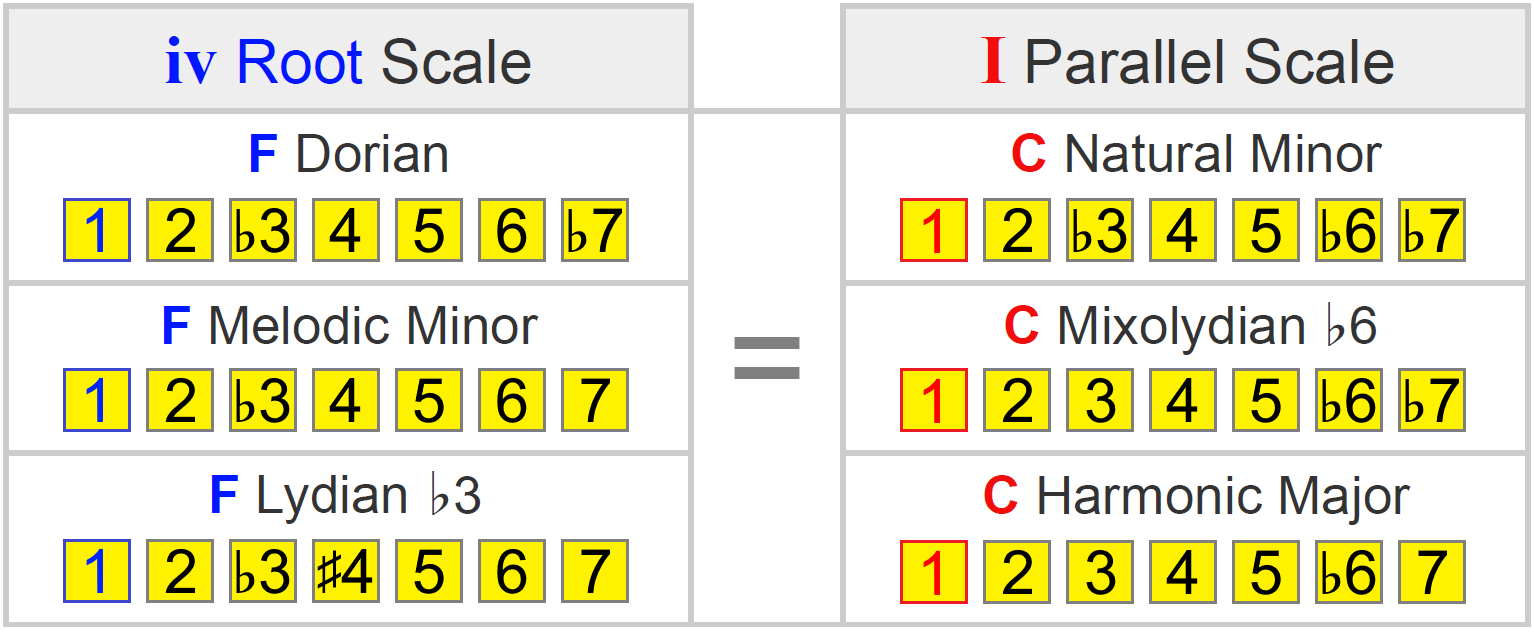
Backing Tracks
Download the tracks below (click/tap the three dots on the right of the audio player) to try out your own ideas with the following scales. Both are in the key of C major and therefore move between Cmaj and Fm (I - iv)...
Slow Orchestral
Faster Rock
Dorian
Dorian can be thought of as the least tense of the three scales, with its softer minor 7th (♭7) interval.
Let's say we were in the key of C major and therefore F minor is our 4 chord. We could simply change from the C major scale to C natural minor, which gives us its related mode of F Dorian, over F minor...
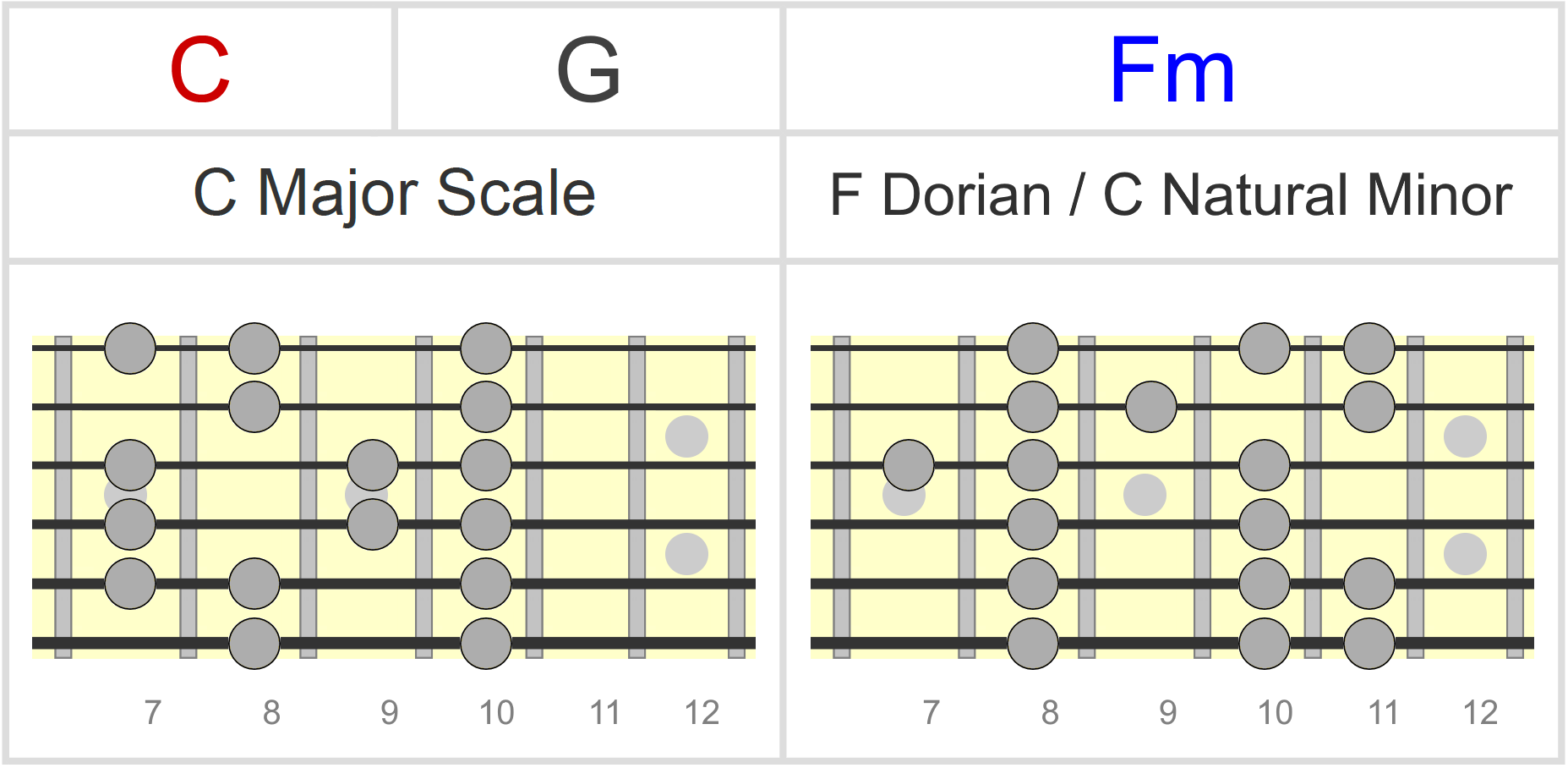
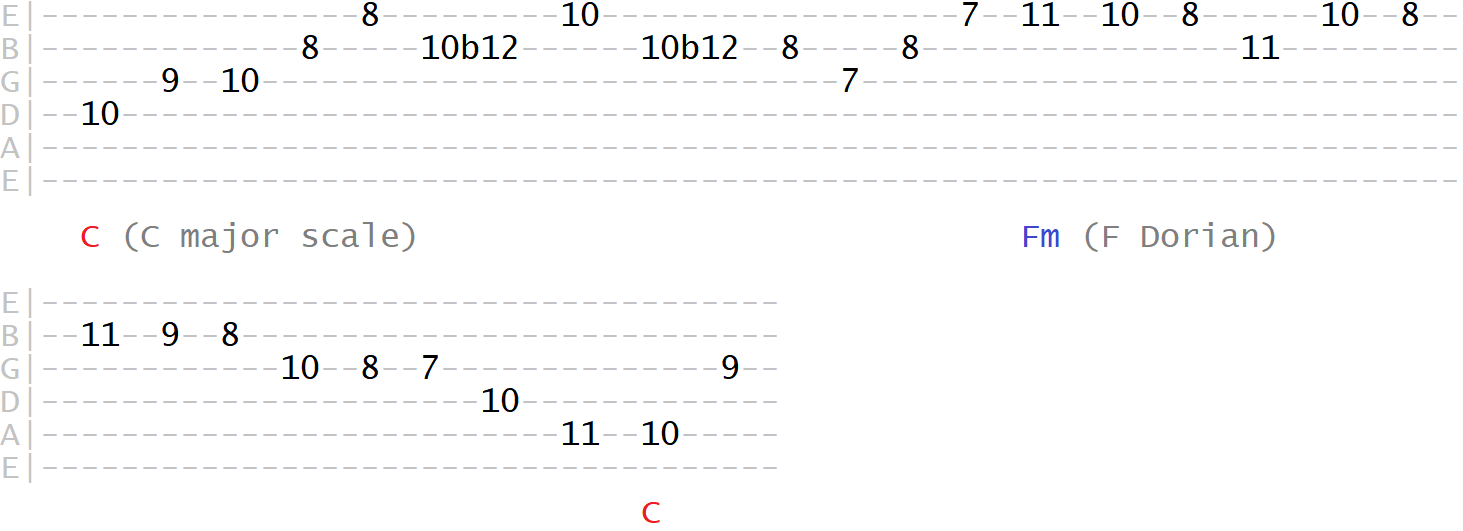
Melodic Minor
Melodic Minor carries a little more tension than Dorian because of its harsher major 7th (7) interval, giving us the minor major 7th colour (e.g. FmM7).
To get F melodic minor, we could visualise a parallel change from C major to C Mixolydian ♭6, a mode of F melodic minor...
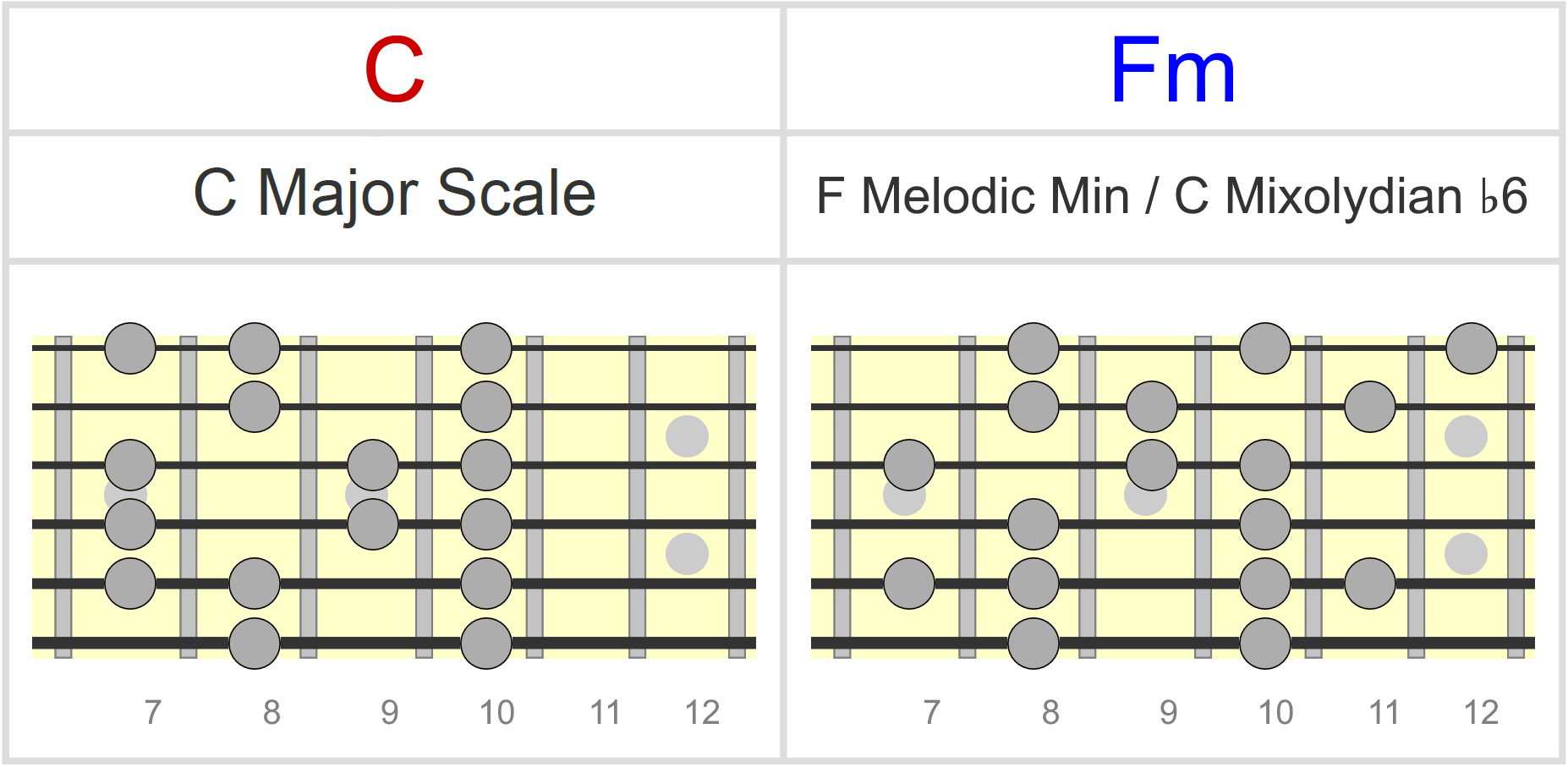

Lydian ♭3
Lydian ♭3, which is the fourth of mode of the harmonic major scale, carries the most tension because of its augmented 4th (♯4) interval, along with the major 7th.
To get this scale on the F position, we can simply lower the 6th degree of C major, giving us the C harmonic major scale on the tonic position...
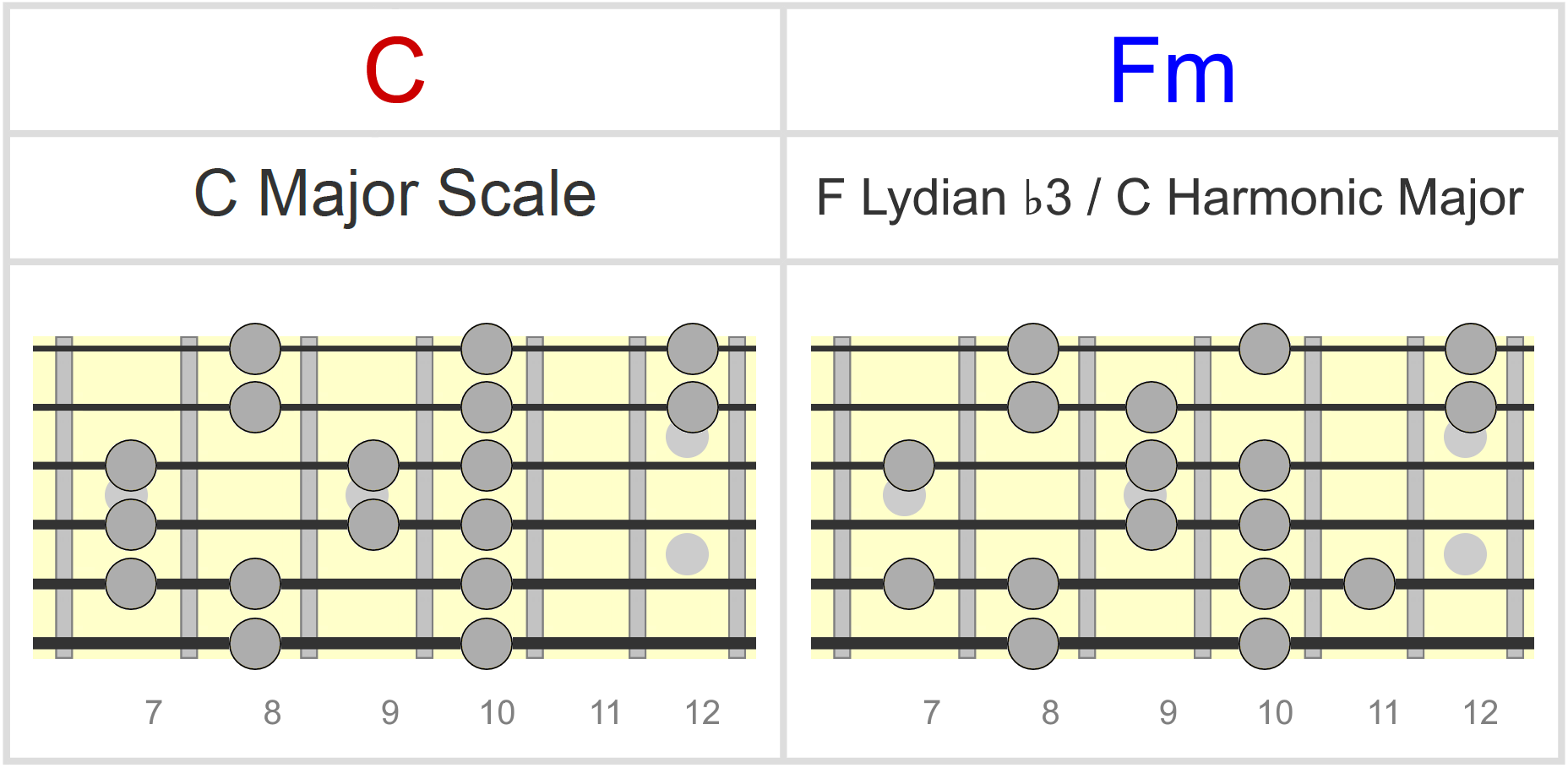
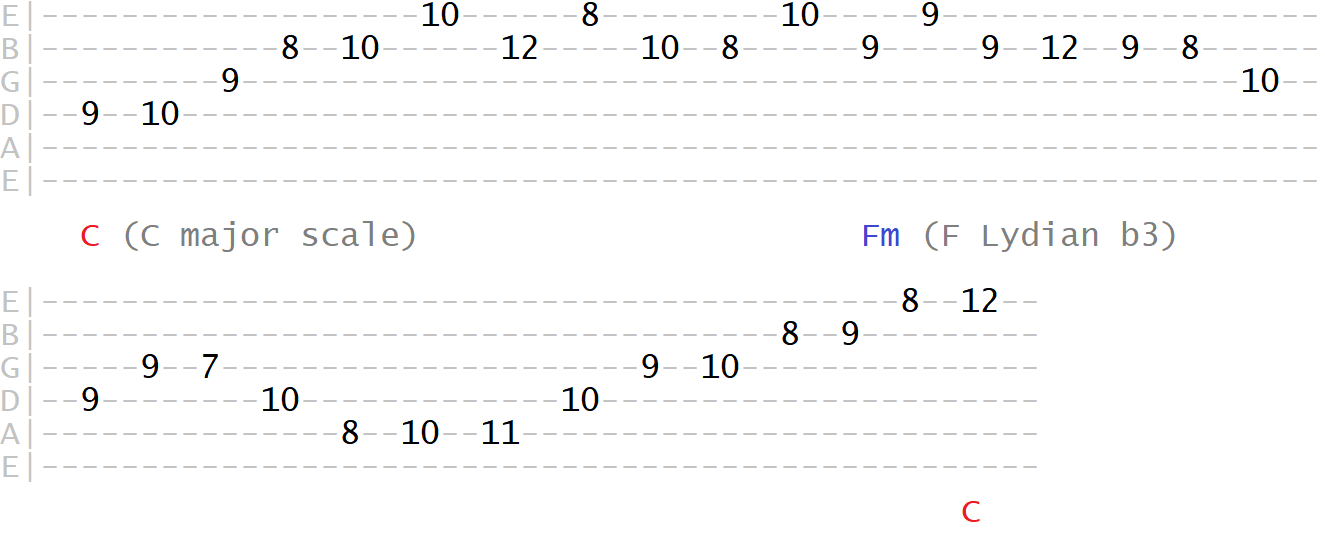
Dominant V Chord
The 5 (V) or dominant chord can also play a prominent role in darkening major keys. The main colour tone responsible for this is the flat 9th (♭9).
There are two main shapes associated with this chord type, rooted on the 6th and 5th strings respectively...


For example, in E major, B7♭9 would be our dark dominant...

Gilbert O'Sullivan makes melancholic use of C♯7♭9 as the dominant in Alone Again (F♯ major key)...
A heart wrenching use of the ♭9 dominant in Keith Jarrett's rendition of It's All In The Game...
Now, we can use a diminished 7th shape to play an inversion of this ♭9 dominant chord.
An easy way to find the related diminished 7th of the dominant is one fret up from the dominant root. For example, Cdim7 gives us the 3rd, 5th, minor 7th and flat 9th of B7b9...

And as diminished 7th chords have a minor 3rd symmetry, we can position their shapes in minor 3rds across the neck, giving us different inversions of the ♭9 dominant...
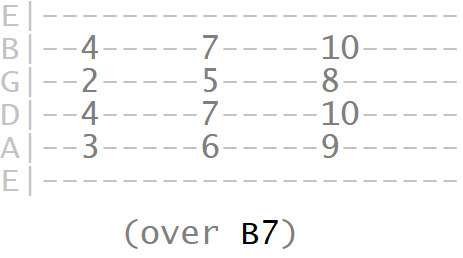
An example in relation to our E major tonic, using these diminished 7th shapes as our dominant...

We can also extend this ♭9 dominant sound with the 13th, combining tension and sweetness...


In that second shape, because of fingering limitations, we can omit the root on the 5th string. We'll still get the colour we need for the voicing, and the bass player will have the root covered in a band situation anyway!
An example of using this in the keys of D major and A major respectively...

Flat 9th Dominant Scales
In major keys, the main scale associated with this ♭9 dominant is Mixolydian ♭9...

As we can see, Mixolydian ♭9 contains the minor 2nd (♭2) and major 6th (6), giving us that combination of tension and sweetness captured in the 13♭9 chord from earlier.
In the key of C major we can make a parallel change to C harmonic major in order to get the G Mixolydian ♭9 sound over the dominant. This is the equivalent of lowering the 6th of the C major scale by one semitone.
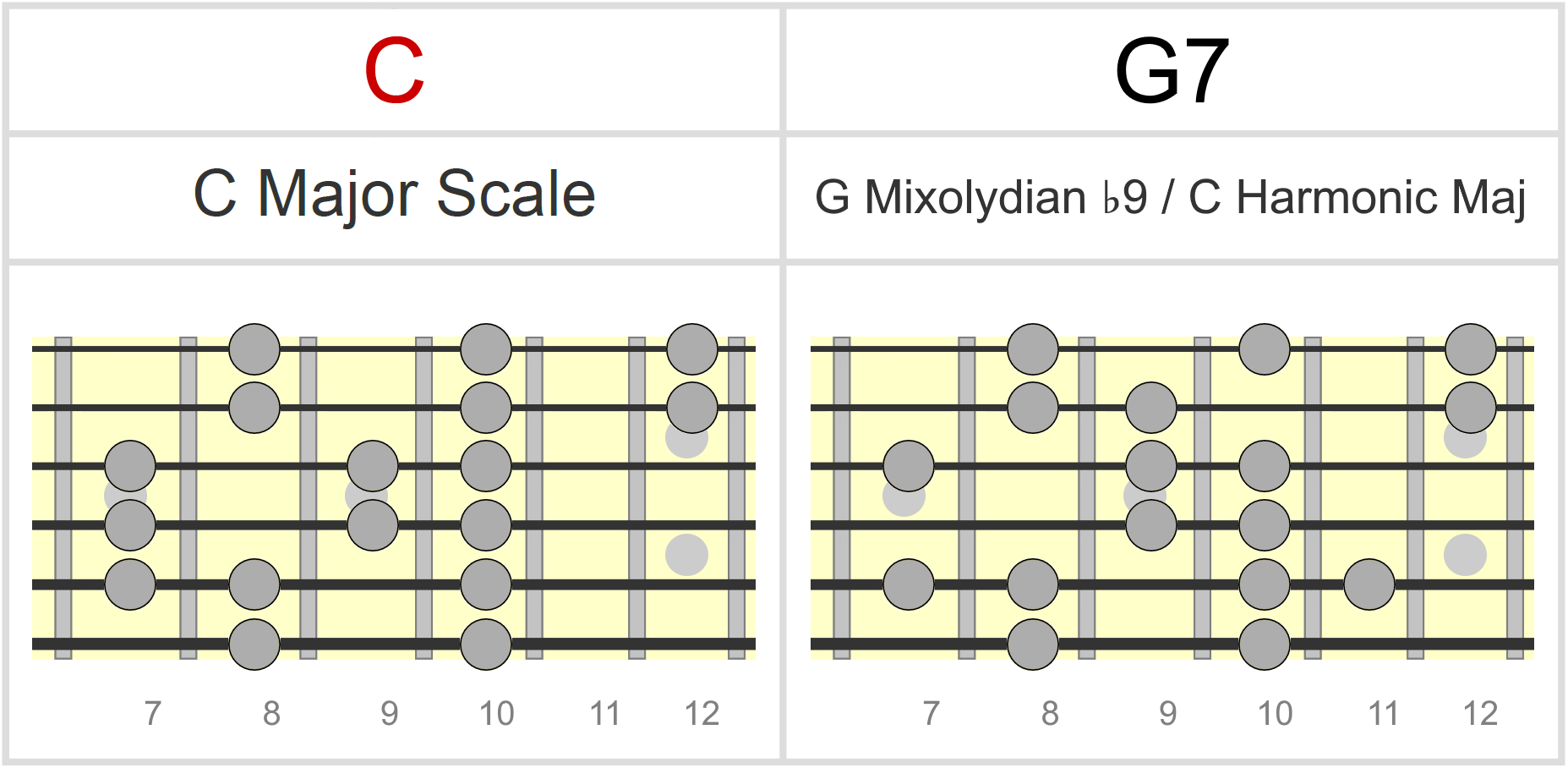
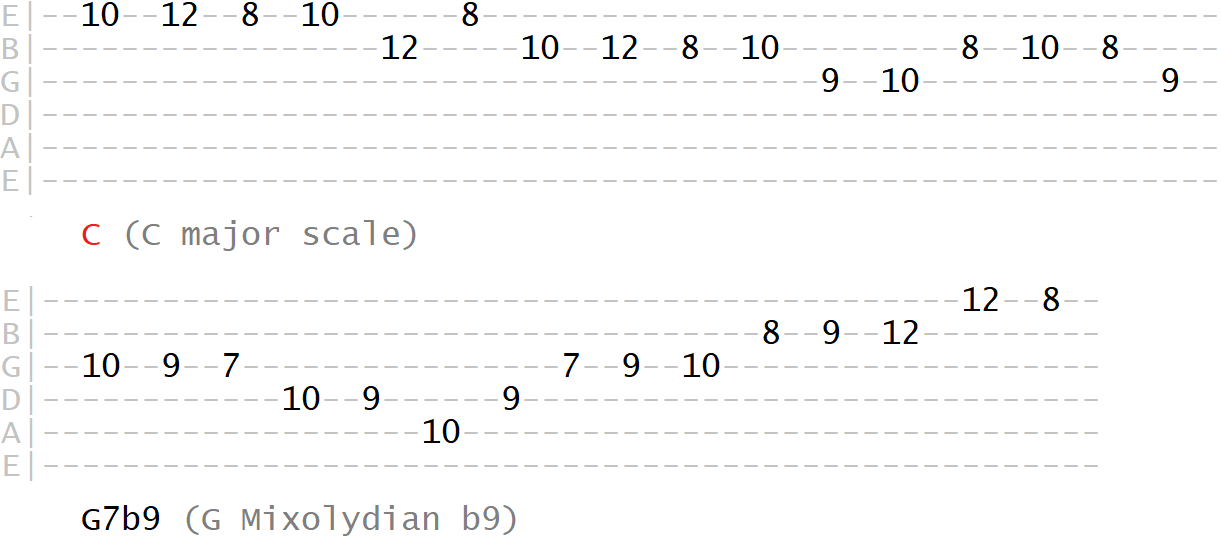
Minor ii Chord
While both the minor 4 chord and ♭9 dominant can be thought of as borrowed from outside the major scale, there is one chord that occurs naturally within the major scale that can add some gloom our major keys.
The ii chord or supertonic, naturally a minor chord, has a particularly lonely quality, especially if we resist leading it through the V chord as in a typical 2 5 1 resolution.
The ii chord root can be found a whole step or two frets up from the tonic root. For example, if our tonic was G major, Am would be our ii chord...

Take this example in G major, where we approach its Am ii chord in different ways...

Minor ii Scales

As the minor ii chord is a naturally occurring chord within the major scale, we can simply stay on the tonic major scale through this chord change. For example, C major would give us D Dorian, the natural mode of the ii chord...
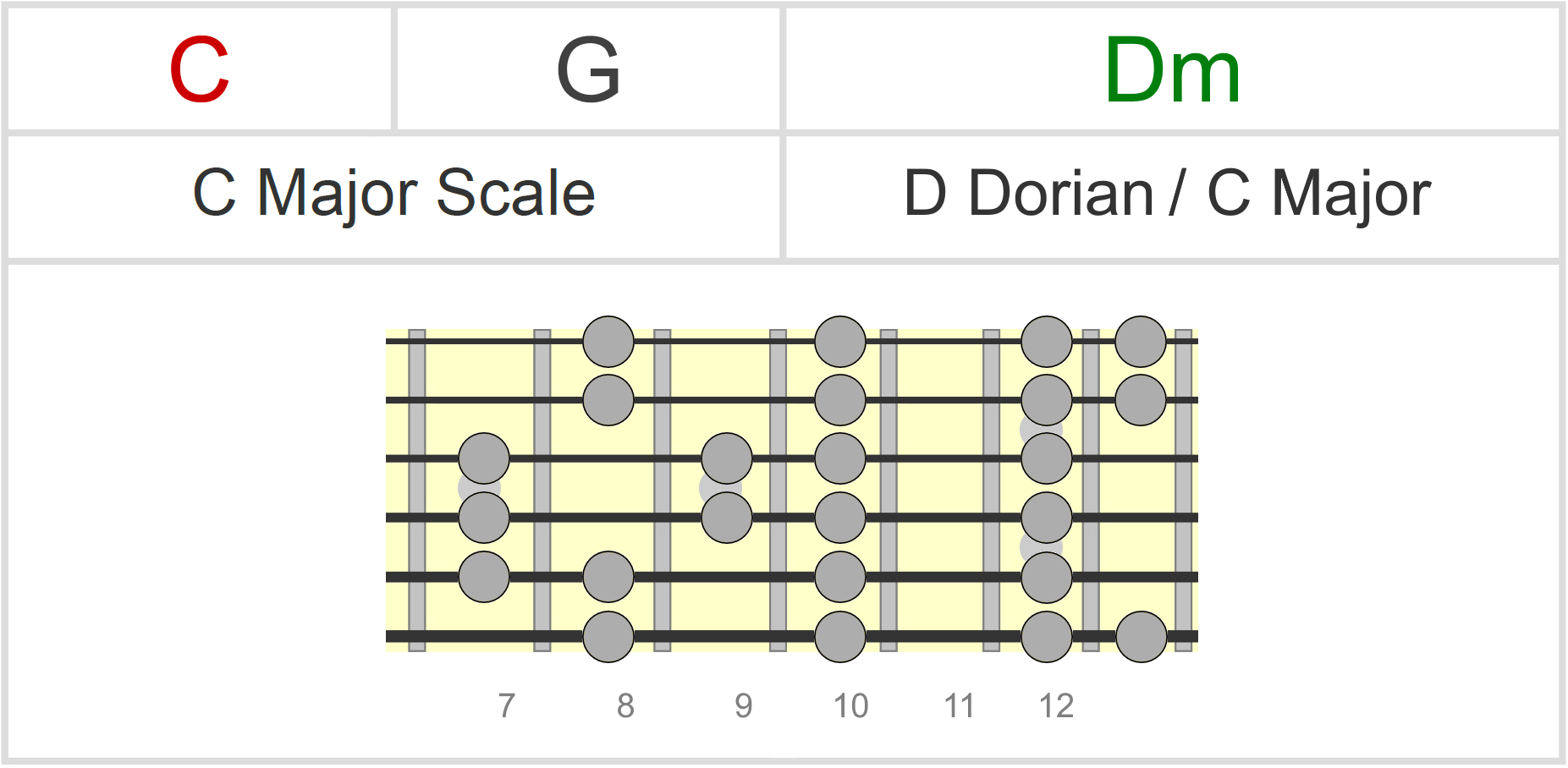

There are of course other examples of darkening major key music. But I hope I've helped to open your eyes, ears and emotions to this form of musical expression!
